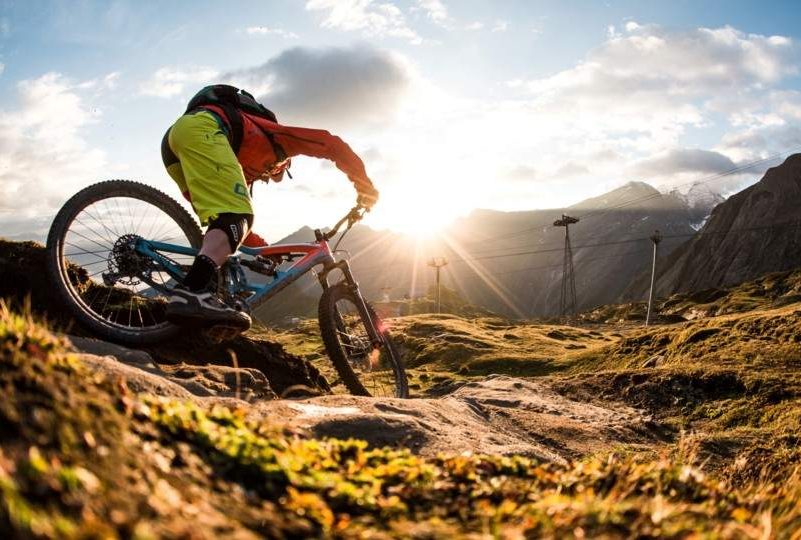In recent years the practice of mountain biking or mountain biking has become a worldwide trend. The reasons that motivate this sport are varied and range from the pursuit of health benefits to the pleasure of having it as a hobby by using it to decompress the stress of routine and training that has the goal of participating in tournaments.
Beyond the different individual searches, all who practice it agree that Mendoza offers an ideal setting for pedaling, thanks to its unique landscapes and the safety of its natural circuits and routes. As far as cycling is concerned, Having a natural setting is ideal. Our province facilitates the practice of various modalities such as cross country, rally or climbs. Something difficult to find in one place, in addition to the security offered by natural circuits due to the absence of traffic. Thus, the Wine Roads and the Productive Corridor; Los Cerrillos, Cristo Rey, Las Tunas dam and the road to La Carrera are some of the most chosen places of Mendoza by cyclists, for tranquility and safety. In a later section we propose several circuits to travel, with different degrees of difficulty and objectives.
Then we give you some information about the type of bike that should be chosen when you plan to visit Mendoza and cycle through it.
Mountain biking (in English, mountain bike, MTB) is a type of bicycle designed for trips in the mountains or countryside. It is called, in Spanish, off-road bicycle (BTT).
In general, the components of any mountain bike consist of a frame, wheels and systems of change resistant to the impacts of the terrain, provided in many cases, with a suspension system. Also, the covers are thicker and with plugs to better absorb the irregularities of the terrain and in this way obtain better traction. Finally, the diameter of its wheels can vary from 24 to 29 inches, being 26 inches the most used measurement since its inception, besides being the easiest to find. Recently new formats have been introduced consisting of the use of covers with a ball slightly higher than the traditional ones, thus achieving a greater absorption of irregularities in the terrain.
At the moment for the manufacture of the picture of the mountain bicycle diverse materials are used, being the most common the aluminum, which offers a light picture at an accessible price. The frames are manufactured with carbon fiber, a type of bicycle designed for trips in mountains or fields.
In turn, mountain bikes can be classified into four categories, based on suspension:
Completely rigid: a frame with a rigid fork and rear, without suspension.
Rigid with front suspension: hard tail (in English), front suspension of small travel fork and rigid rear frame.
The double suspension bike represents the most important advance of cycling in the last century; since it gives cyclists the chance to reach places that were once considered inaccessible for such a vehicle. improving maneuverability and control in irregular terrain. Through it have appeared new forms of cycling, approaching the field of extreme sports. From here the two remaining categories come off:
Double suspension without pivot: soft tail (in English), a frame with a small travel of the rear suspension, which is activated by the flexion of the box type triangle swinging instead of pivots, and front suspension of intermediate travel.
Double or full suspension: full suspension (in English), double front fork suspension from 140 to 203 mm of travel and rear suspension with rear shock absorber commonly of 240 mm for greater comfort and efficiency, with a link that allows the rear wheel move on pivots.
In this way, depending on the characteristics of the bicycle, different categories of cycling have emerged:
Rally: Bicycles are usually used without rear suspension, with a low-front suspension and very light (in many cases below 10 kg).
Downhill: uses heavily reinforced and heavy frames, rear and front suspension systems for long-haul, thick and heavy wheels, giving rise to bikes that are around 20 kg.
Freeride: from its acronym in English, free driving. They are small, light and very resistant bicycles, specially built for jumping parks, where the driver must be very experienced and agile. These bicycles allow the pedaling in ascent, nevertheless, they are not constructed for long routes.
Single Speed: from its acronym in English, only one speed. They are single-speed or fixed-gear bicycles, totally rigid with a steel frame, which is chosen depending on the terrain to be traveled, the strength and dexterity of the cyclist, as well as the size of the bike. They are generally used by runners with very good physical condition and on mild to moderate terrain.
Trail: bicycles with wide travels (120 mm to 150 mm) on the suspensions, to be able to make descents safely, but keeping bicycles with low weights and designs that allow pedaling easily, especially on slopes.
Downhill: It is characterized for using heavy and much more resistant bicycles, with even wider distances of 180 mm to 210 mm than the traditional mountain ones; for its steep, steep slopes, full of rocks and obstacles,
Cross Country: It is the most popular and extended modality because it usually serves as an initiation in this sport. It is practiced on field terrain, mountain or saw, usually with rigid bikes that only carry suspension in front fork of 100 mm or 110 mm.
Although mountain bikes are designed to travel natural terrains, it is advisable that cyclists have a minimum tool kit in the event of an unexpected incident, such as:
Adjustable spanner
Spats for removing covers
Case to repair punctures in cameras
Spoke wrench
Ratchet wrench 8, 9 and 10 mm.
Phillips and Phillips screwdriver
Allen keys of 4, 5 and 6 mm.
Chainsaw
Quick assembly chain link
Lubricant for the chain
Air chamber
Inflator
Torx Keys
In addition to your personal equipment such as helmet, lights, knee pads, water, sunglasses, sunscreen, proper shoes and coat.






